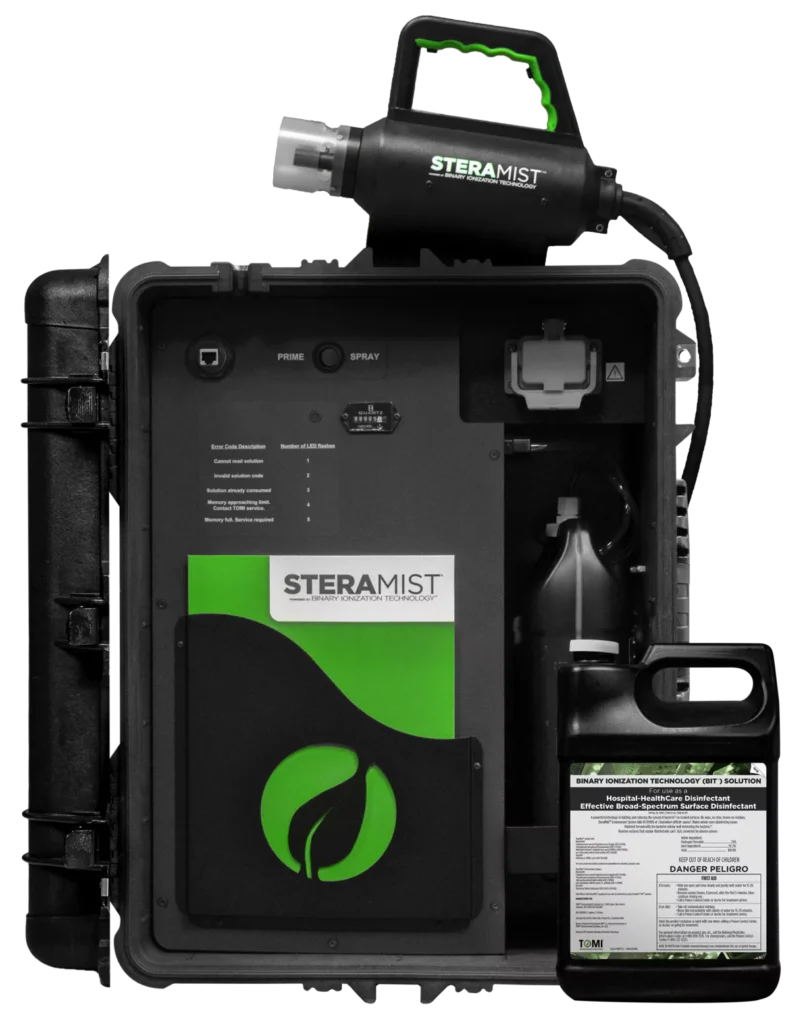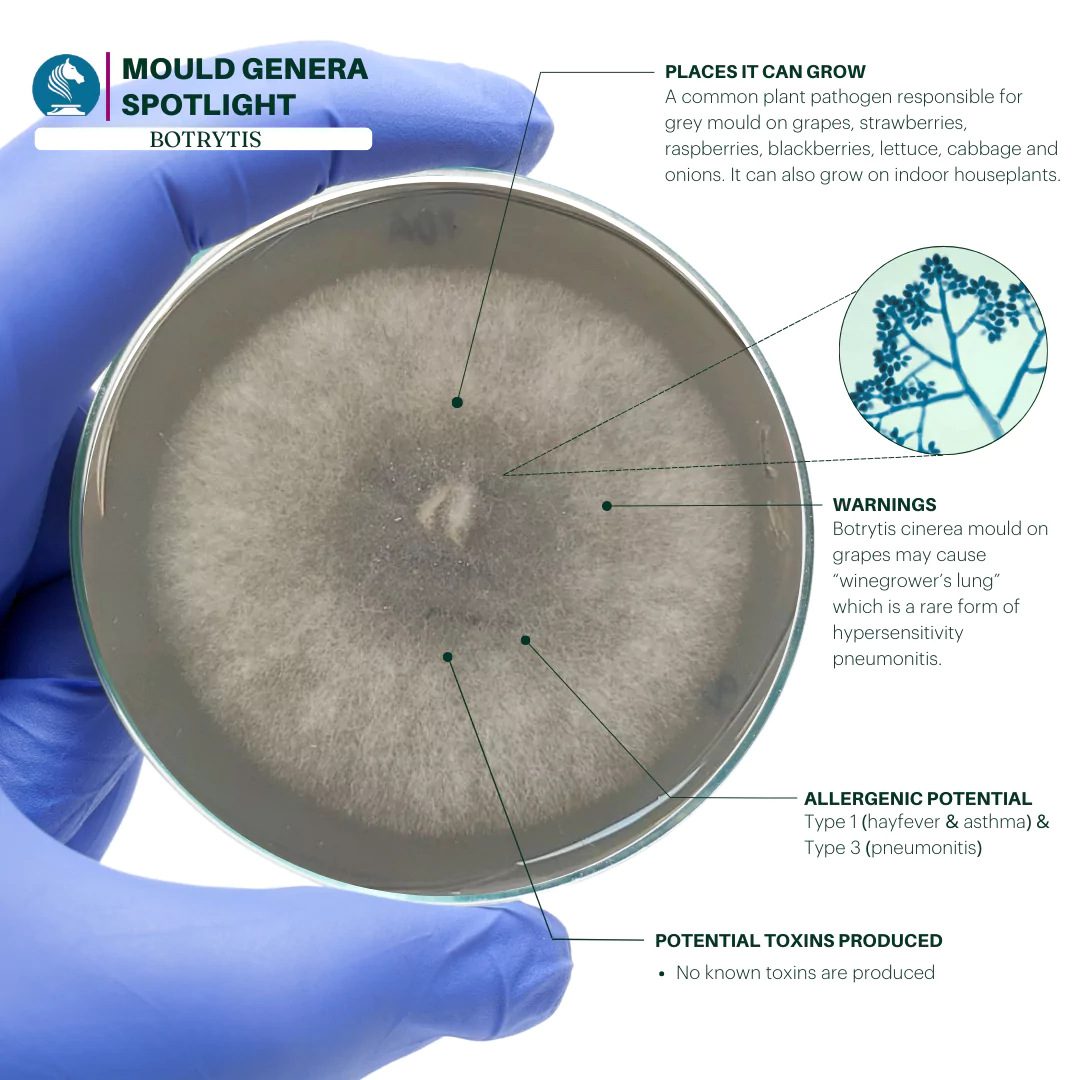
MYCOTOXINS
HEALTH RISKS & CONTROL
What are Mycotoxins?
Mycotoxins are metabolic byproducts produced by certain fungi and mould species, as they secrete enzymes to aid in the digestion of substrates, often found indoors, following a water damage event. They may include:
• aflatoxins
• ochratoxin
• patulin toxins
• trichothecenes
Moulds that have been known to potentially produce these toxins are Acremonium, Alternaria, Aspergillus,
Chaetomium, Cladosporium, Fusarium, Penicillium, and Stachybotrys.
WHITE KNIGHT Enviroforensics laboratory technicians can identify these mould genera and determine the potential for mycotoxin exposure.
Exposure Health Risks
Mycotoxins are released to give fungi a competitive edge over other microorganisms. Unfortunately, mycotoxins can also be incredibly toxic to humans causing a variety
of responses including cold/flu-like symptoms, sore throats, headaches, nosebleeds, fatigue, diarrhoea, dermatitis, and immune suppression.
of responses including cold/flu-like symptoms, sore throats, headaches, nosebleeds, fatigue, diarrhoea, dermatitis, and immune suppression.
Aflatoxins are the most harmful type of mycotoxin, they can be carcinogenic (cancer causing) or create problems with digestion or the immune system.
Mycotoxins like moulds are naturally occurring, so their presence cannot be completely avoided, however, controls can be implemented to ensure that human exposure is maintained as low as reasonably possible.
Mycotoxin Control
WHITE KNIGHT provides effective mould control with the complete removal of visible and hidden mould, and specialist SteraMist treatments to neutralise mVOC’s (microbial volatile organic compounds).
Powered by state of the art, patented ionised Hydrogen Peroxide (iHP) technology SteraMist is validated using Geobacillus stearothermophilus for a consistent 99.9999% 6-log and greater reduction. Mycotoxins are neutralised within seconds and spaces are habitable within minutes.





